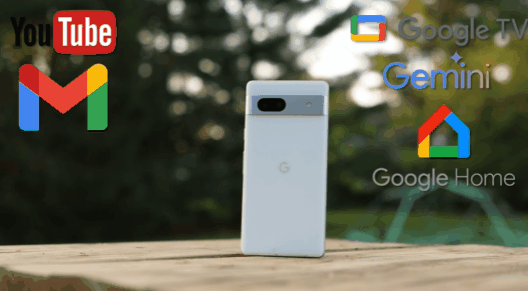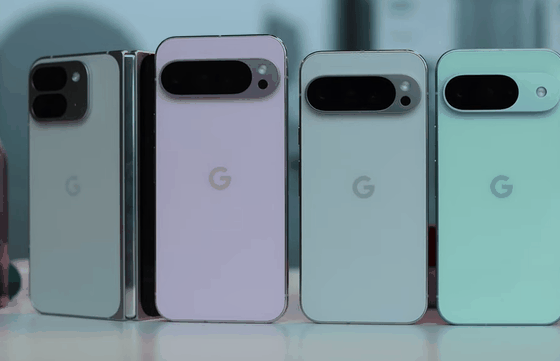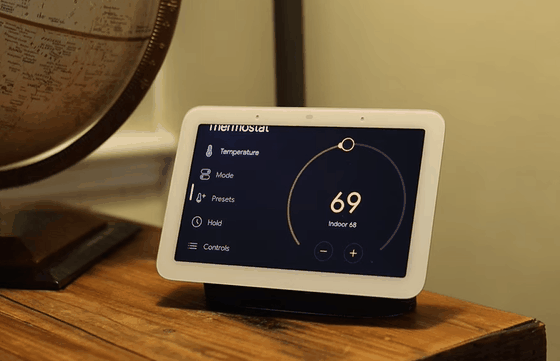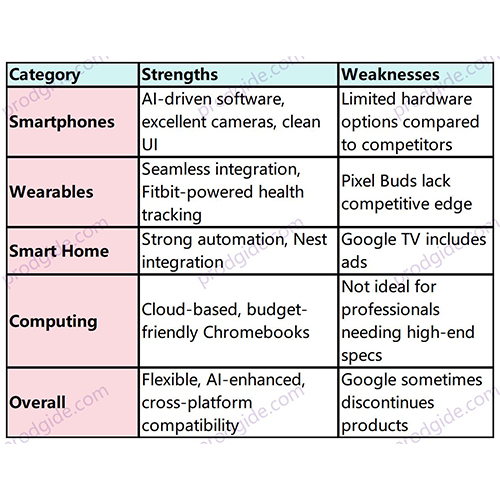Is the Google Ecosystem Truly Worth It or Just a Costly Lock-In? A Deep Dive!
The Google ecosystem has expanded far beyond just a search engine. With hardware and software integration across smartphones, wearables, home automation, and AI-driven services, Google aims to create a seamless digital experience for its users. But is investing in the Google ecosystem truly worth it? In this in-depth review, we analyze its key components, strengths, and drawbacks to help you decide if it’s the right choice for you.
RELATED: The Ultimate Smart Home Guide: Is It Worth the Investment?

Google Ecosystem: What Sets It Apart?
Unlike Apple and Samsung, which center their ecosystems around devices, Google takes a software-first approach. Its core products—YouTube, Gmail, Google TV, Gemini AI, Google Home, and more—are designed to function across various platforms, making it a flexible ecosystem.
- Key Advantages of the Google Ecosystem
Cross-Platform Compatibility – Works across Android, Windows, and even iOS.
Cloud-Centric Approach – Data syncs effortlessly across devices via Google Drive, Photos, and Docs.
AI-Powered Features – Google Assistant, Gemini AI, and smart automation enhance productivity.
Affordability & Variety – Offers budget-friendly to premium-tier devices.
RELATED: The Ultimate Smart Home Guide: Is It Worth the Investment?

Google Devices: A Deep Dive
1. Pixel Smartphones: Leading Android Innovation
Google’s Pixel lineup continues to set the standard for Android phones, with AI-driven software enhancements and powerful camera systems.
Pixel 8A ($399) – Best for mid-range buyers, featuring excellent camera performance and AI-driven enhancements.
Pixel 9 ($650) – Adds an ultra-wide lens, a better display, and a more powerful Tensor G4 chip.
Pixel 9 Pro ($850) – A flagship device with a 5x telephoto lens and a more premium design.
Pixel 9 Pro Fold ($1,500) – Google’s foldable smartphone, combining tablet-like functionality with an adaptive UI.
RELATED: Before Buying the iPhone 16e: Things You Must Know
2. Wearables: Pixel Watch & Pixel Buds
Pixel Watch 3 – Integrates deeply with Google services, offering Fitbit-powered health tracking and seamless smart home controls.
Pixel Buds Pro 2 – While functional, they face tough competition in the premium earbuds segment.
RELATED: Samsung's All-Star Lineup: The Ultimate 2025 Collection
3. Smart Home Integration: Google Nest & Home Devices
Google Nest Hub (2nd Gen) – Acts as a smart home hub, controlling compatible devices.
Level Lock+ – A sleek smart lock with NFC, Bluetooth, and Google Home integration.
Google Nest Cameras – Work seamlessly with Google Assistant for easy monitoring.
Google TV & Chromecast – Provides a unified streaming experience but includes intrusive ads.
RELATED: Alexa, Siri, or Google? Choosing the Best Smart Assistant in 2025
4. Computing: Chromebooks & Google Wi-Fi
Chromebooks – Great for web-based productivity but limited for creative professionals.
Google Wi-Fi – Simple, aesthetic routers that blend well into any home environment.

Is the Google Ecosystem Right for You?
Pros:
- AI-powered efficiency (Google Assistant, Gemini AI, automation).
- Seamless integration across devices.
- Affordable entry points with premium options available.
- Strong commitment to cloud services and software updates.
Cons:
- Google’s history of discontinuing products (e.g., Stadia, Google Glass).
- Intrusive ads on Google TV and free services.
- Limited hardware customization compared to competitors.

Final Verdict
The Google ecosystem excels in software integration, AI-powered enhancements, and affordability, making it a solid choice for users who prioritize convenience and cross-platform functionality. However, if you prefer a more stable long-term investment with premium hardware, Apple or Samsung may be better options.
So, is the Google ecosystem worth it? If you value seamless connectivity, AI-driven features, and an open ecosystem, the answer is a resounding YES!
RELATED: 7 Google Smart Home Devices That Make Life Easier and More Efficient






